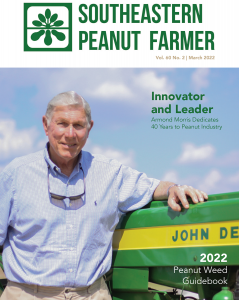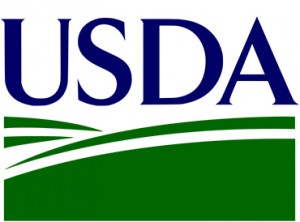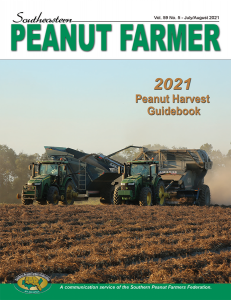 Henry County parents, Caleb and Freda Bristow were heartbroken, yet determined after finding out their youngest son Sam, suffered from a peanut allergy. For some parents this information may seem frustrating and inconvenient but for the Bristow family it was very problematic.
Henry County parents, Caleb and Freda Bristow were heartbroken, yet determined after finding out their youngest son Sam, suffered from a peanut allergy. For some parents this information may seem frustrating and inconvenient but for the Bristow family it was very problematic.
Caleb Bristow grew up on a peanut farm, manages a peanut buying point and also sells peanut trailers. Peanuts are an essential part of his everyday life. “I even had people joke- with me growing up in the peanut industry- and say oh wouldn’t it be funny if your kid has a peanut allergy,” said Caleb.
About a year ago, when Sam was around six months old, Caleb and Freda started introducing Sam to peanut products. He had a few minor reactions to it, but Caleb wasn’t convinced his child could be allergic to peanuts. Having already been diagnosed with some food allergies, and after a trip to a pediatric allergist, the Bristow’s worst nightmare was confirmed. Sam was diagnosed with a peanut allergy at around nine months old. “I literally work for peanuts and now I have a kid who is allergic to peanuts,” says Caleb.
Fortunately for the Bristow family, they knew that just living with the allergy wasn’t the only option like their allergist had suggested. Caleb, having also been the former executive director of the Alabama Peanut Producers Association, had previously had the opportunity to meet with a doctor in Birmingham who was working on a groundbreaking treatment that essentially eliminates the peanut allergy from a person’s body.
Dr. Joseph LaRussa, M.D. is a Board-Certified Allergy and Immunology Specialist in Birmingham. With 22 years of pediatric allergy experience and having a child with peanut and tree nut allergies, Dr. LaRussa knows what it is like to be a parent of a food allergy child. He has discovered that children with a peanut allergy can actually be desensitized to the allergy through oral immunotherapy.
In January of 2015 a group of researchers from both London and the U.S. released a groundbreaking study which is now known as the Learning Early about Peanut Allergy (LEAP) study. The results of the study found that the introduction of peanuts into an infant’s diet, prior to 11-months old, reduced the prevalence of peanut allergy by approximately 70-80 percent (peanutallergyfacts.org). This study motivated Dr. LaRussa to conduct further research on how to help patients with peanut allergy.
During the Bristow’s first appointment the doctor said something that Freda says she’ll never forget. Dr. LaRussa said “we want to dictate food allergies, not food allergies dictate the way we live.” “I almost cried… that was just like a sigh of relief. We can help him (Sam) with this, so he doesn’t have to live in fear,” says mother, Freda.
Sam is far enough along in his treatments that the Bristow family no longer has to worry about having peanut products in the house. “After 16 weeks we have finally worked our way up to half a teaspoon of peanut butter,” says Caleb. By springtime, Sam should be able to enjoy a peanut butter and jelly sandwich.
While this immunotherapy is not FDA approved, it has proven to be a safe and viable option for infants and children trying to overcome peanut allergies. For more information on how to safely introduce peanuts to your infant to help prevent peanut allergy, visit https://preventpeanutallergies.org/.
Alabama peanut farmers care deeply about their product and the consumers who are affected by it. Since 2001, through the National Peanut Board, peanut farmers across the nation have earmarked more than $32 million of their own dollars into research and education about food and peanut allergies.









